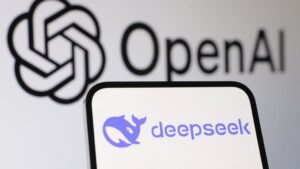Study Reveals OpenAI’s Latest Model Exhibits Greater Human-like Qualities

OpenAI’s New Model: A Leap Towards Human-Like Intelligence
Advancements in AI Technology
Recent research has highlighted significant advancements in artificial intelligence, particularly with OpenAI’s latest model. This new model is being described as "more human than humans," which raises intriguing discussions about how AI is evolving and its potential applications.
Understanding Human-Like Intelligence
Human-like intelligence in AI refers to the model’s ability to imitate human thought processes, emotions, and interactions. Achieving this level of sophistication involves:
- Natural Language Processing (NLP): This technology allows machines to understand and generate human language in a way that feels conversational and relatable.
- Contextual Understanding: The newest models can grasp context more accurately, making their responses more relevant and coherent compared to earlier iterations.
- Emotion Recognition: Advanced algorithms are beginning to recognize emotional cues from user input, allowing for more empathetic interactions.
Key Features of OpenAI’s Latest Model
1. Enhanced Communication Skills
The new model’s communication capabilities are significantly advanced. It can engage in discussions, answer questions, and provide explanations in a manner that feels natural. This advancement is driven by immense training data that helps the AI understand various conversation styles and tones.
2. Improved Learning Mechanisms
OpenAI’s latest model utilizes advanced machine learning techniques. This means it can learn from past interactions and adapt its responses based on feedback. Key points include:
- Reinforcement Learning: This approach helps the AI improve over time through trial and error, rewarding correct outputs and adjusting for mistakes.
- Transfer Learning: This allows the model to apply knowledge from one area to different tasks, enhancing its versatility in handling various queries.
3. Ethical Considerations
The development of more human-like AI raises ethical questions. OpenAI has made strides to ensure that their technology is used responsibly. This involves:
- Transparency: Making the workings of AI models clear to users to foster trust and understanding.
- User Control: Allowing users to have a say in how the AI interacts with them, establishing clear boundaries and expectations.
Applications of Human-Like AI
1. Customer Service
One of the most immediate applications of this advanced intelligence is in customer service. AI models can handle inquiries more effectively, providing users with timely responses and solving problems without human intervention. Benefits include:
- 24/7 Availability: AI can respond to customer queries at any time, enhancing user satisfaction.
- Consistency: Unlike human agents, AI provides uniform responses, minimizing discrepancies.
2. Education
AI’s ability to engage in natural conversation makes it a valuable tool in educational settings. It can assist with:
- Tutoring: Providing personalized help based on a student’s learning pace and style.
- Resource Creation: Crafting educational material that aligns with curriculum needs.
3. Mental Health Support
The empathetic capabilities of human-like AI could revolutionize mental health support. AI can offer:
- Anonymity: Users might feel more comfortable discussing their issues with an AI model.
- Immediate Assistance: Providing support at times when human help may not be available.
Future Implications
As AI continues to advance, the implications for society are profound. The ability to create machines that can understand and react to human emotions poses both opportunities and challenges. It invites questions about job displacement, privacy, and the evolving relationship between humans and technology.
In summary, OpenAI’s latest model exemplifies the significant strides being made towards human-like intelligence in AI. With exceptional communication and learning capabilities, along with ethical considerations in mind, the future promises exciting developments across various sectors. Observing how society adapts to and governs this technology will be essential as we move forward.






